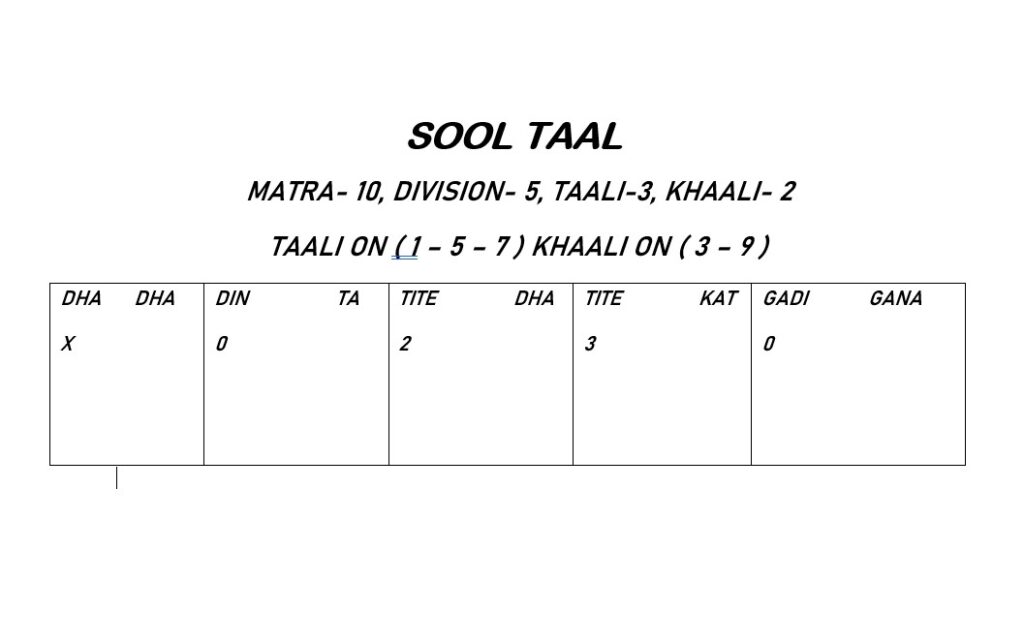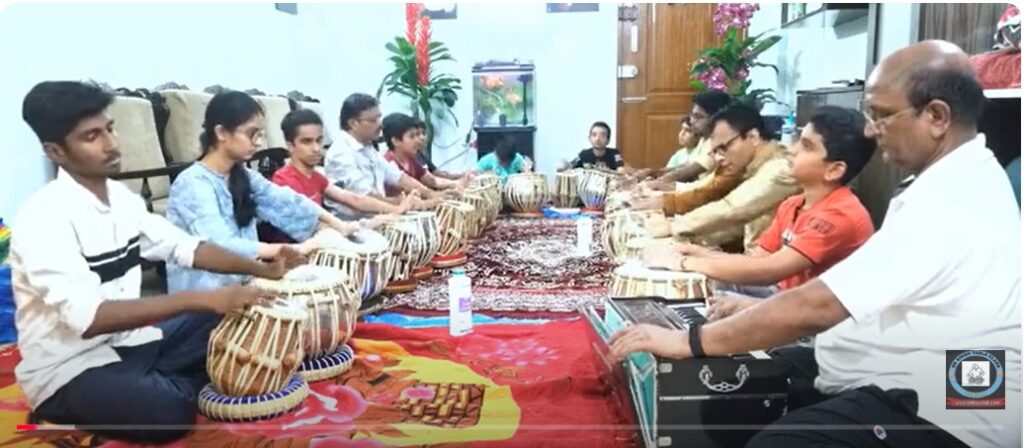Sool Taal rhythm pattern, Sool Taal 10 beat cycle,Sool Taal tabla theka,Sool Taal in Hindustani classical music,Sool Taal beat structure,Sool Taal Dhrupad performance,Sool Taal time signature,How to play Sool Taal,Sool Taal pakhawaj accompaniment,Learning Sool Taal basics.
Introducing-Sool Taal Tabla Theka, Sool Taal is a rhythmic cycle (Taal) in Hindustani classical music consisting of 10 beats. The structure is divided into four segments: the first two and the last two sections each contain 2 beats, while the middle section has 3 beats. This rhythmic cycle is commonly used in Dhrupad and devotional music, typically performed on instruments like the pakhawaj and tabla.Sool Taal follows a slow to medium tempo, with a prominent “Tali” (clap) on the 1st, 5th, and 9th beats, while the 7th beat is marked with “Khali” (wave). It is known for its use in traditional and formal musical performances and often includes compositions like Kayda, Tukda, and Paran

https://www.youtube.com/@BhagawanSingh
https://www.facebook.com/sbsinghtablaguru
Sool Taal, also spelled Sul Taal or Sur Taal, is a traditional 10-beat (matra) rhythmic cycle used in Indian classical music. It’s common in Dhrupad and Dhamar styles and is known for its unique structure that combines symmetry and complexity, making it suitable for both vocal and instrumental music. Sool Taal provides a slower, more contemplative rhythm often used in devotional and classical compositions.
Structure and Composition
- Matras (Beats): 10
- Vibhags (Divisions): 5
- Taal Structure: 2+2+2+2+2
Beats in Each Division
Each division has 2 beats, structured as follows:
- First Division: 2 beats
- Second Division: 2 beats
- Third Division: 2 beats
- Fourth Division: 2 beats
- Fifth Division: 2 beats
Taali (Clap) and Khaali (Wave)
- Taali (Clap): Beats 1, 5, and 7
- Khaali (Wave): Beat 9
Basic Theka (Tala Pattern)
The standard theka, or base rhythm pattern for Sool Taal, is:
- Dha Dha | Dhin Ta | Tit Dha | Dhin Ta | Tit Dha
This pattern is repeated cyclically throughout a performance, forming a steady foundation upon which the musician can build rhythmic variations and improvisations.
Use in Indian Classical Music
- Dhrupad and Dhamar: Sool Taal is especially prevalent in Dhrupad compositions, where it complements the slow and meditative nature of this ancient vocal form.
- Instrumental Music: It is also used in tabla solos and other instrumental pieces, where the 10-beat cycle allows for creative rhythmic play and layakari (tempo modulation).
- Devotional and Classical: Due to its somewhat devotional character, Sool Taal is often chosen for renditions that require a deep, resonant rhythm.
Variations and Improvisation
While the standard theka provides a basis, skilled tabla players and musicians often introduce variations by:
- Altering the bols (syllables) to create different rhythmic patterns.
- Using layakari (playing with tempo) to vary the speed within the 10-beat cycle.
- Adding tukras, parans, and chakradars (types of rhythmic compositions) to explore complex patterns within the Sool Taal framework.
Relationship to Other Taals
Sool Taal’s 10-beat structure makes it similar in length to Jhap Taal (also 10 beats), but its division and clapping structure differ, creating a distinct feel. Sool Taal’s divisions and theka provide a heavier, more grounded rhythm, while Jhap Taal typically feels lighter and more flexible in its use.

- For a Tutorial:
“Sool Taal Tabla Theka – A Step-by-Step Tutorial for Beginners!” - For Practice or Demonstration:
“Master the Sool Taal Tabla Theka – Essential 10-Beat Rhythm!” - For Highlighting Importance:
“Learn the Timeless Sool Taal Theka – A 10-Beat Classic in Tabla!”
